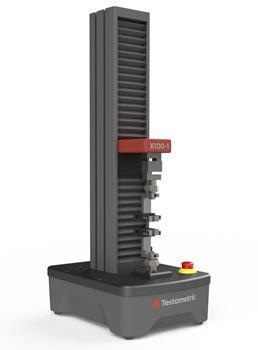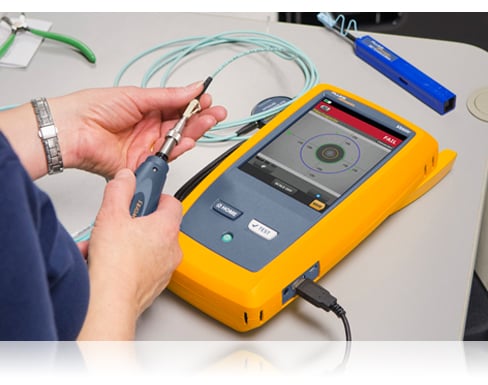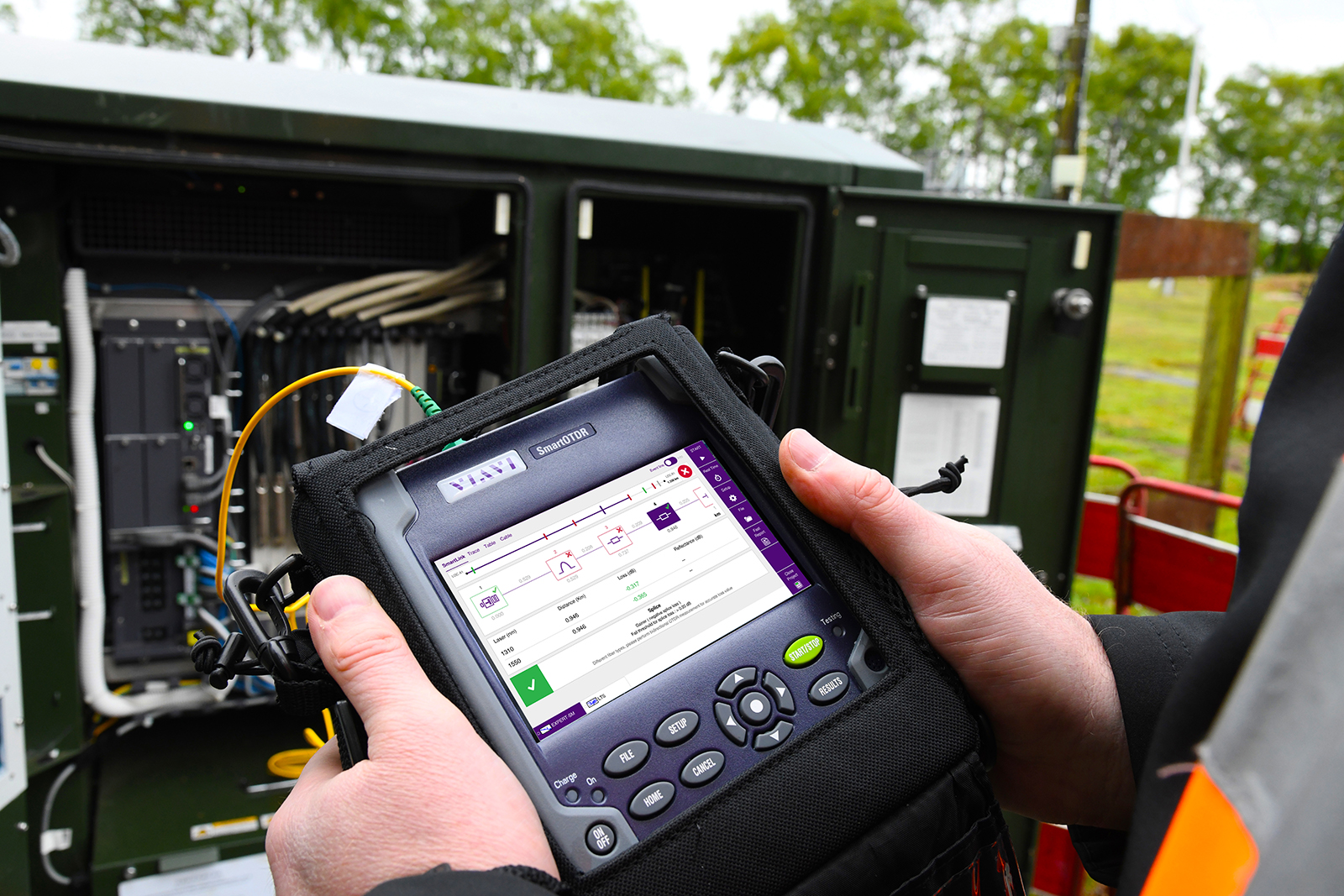A Comprehensive Guide to Optical Measurement System for Fiber Analysis
When it pertains to fiber analysis, comprehending optical dimension systems is crucial for evaluating performance and making sure quality. You'll explore necessary techniques like interferometry and spectroscopy, which help you measure essential criteria. There's more to it than just these techniques; grasping depletion measurement techniques can significantly affect your network's effectiveness. As you browse via this overview, you'll reveal insights that could transform your approach to fiber optics.
Understanding Optical Measurement Solutions
When you check out optical dimension systems, you'll uncover they're essential for analyzing fibers with precision. These systems utilize light to assess various features of fibers, consisting of diameter, refractive index, and harmony. By utilizing techniques like interferometry and spectroscopy, you can gain important understandings into the fiber's properties.You'll find that these systems are designed to minimize mistakes and boost precision, guaranteeing dependable data for your analysis. Various setups, such as single-mode and multi-mode systems, provide to particular fiber types, permitting you to pick the most effective fit for your needs.Moreover, the integration of advanced software program devices assists you analyze the data effectively, making it simpler to identify any kind of incongruities or issues. As you explore deeper into these dimension systems, you'll appreciate just how they enhance the analytical process and enhance the overall quality of fiber manufacturing and testing.
Trick Criteria for Fiber Evaluation
Secret criteria for fiber analysis play a vital role in establishing the high quality and performance of fiber optics. When you assess a fiber, you'll want to concentrate on attributes such as depletion, bandwidth, and modal diffusion. Depletion determines the loss of signal strength as light journeys through the fiber. A lower depletion value indicates far better quality and longer transmission distances - fibre testing equipment.Bandwidth describes the data-carrying capacity of the fiber and is crucial for high-speed interaction. You'll need to assess the transmission capacity to guarantee it satisfies your application needs. Modal dispersion, which occurs from the various rates at which light journeys via different settings in multimode fibers, influences signal clarity
Methods for Depletion Measurement

Transmission capacity and Its Impact on Performance
Understanding data transfer is important for enhancing fiber performance, as it directly influences the amount of data that can be sent over a network. Higher transmission capacity indicates you can send more details concurrently, allowing for faster interaction and better general performance. When you're dealing with fiber optics, it's vital to take into consideration exactly how bandwidth engages with fiber characteristics, such as core size and product properties.If the bandwidth is limited, you might experience information loss or slower rates, affecting your applications. In addition, different sorts of fibers can sustain varying transmission capacity degrees, so it's important to select the appropriate fiber for your particular needs.You must additionally keep in mind that environmental variables, like temperature level and outside disturbance, can affect data transfer. By recognizing these aspects, you can make informed choices to enhance your fiber optic systems, making sure reliable and efficient data transmission.
Refractive Index Measurement Techniques

Overall Internal Representation
Overall inner representation (TIR) functions as a fundamental principle for determining the refractive index of fibers. When light trips from a denser tool to a less thick one, it can only be completely reflected if the angle of incidence exceeds a particular threshold, recognized as the vital angle. This phenomenon permits you to figure out the refractive index by analyzing the angles at which light mirrors or refracts. By utilizing a setup that guides light into a fiber and determines the resulting angles, you can calculate the refractive index precisely. Recognizing TIR not only improves your fiber analysis yet likewise boosts the layout and performance of optical systems. Leveraging TIR can lead to more effective fiber-based applications.
Interferometric Methods
Structure on the concepts of overall inner representation, interferometric techniques offer a powerful ways for gauging the refractive index of fibers with high accuracy. These approaches make use of the disturbance patterns developed when light beam of lights split and recombine after taking a trip various courses. You can make use of setups like the Michelson or Mach-Zehnder interferometer to analyze stage changes created by adjustments in refractive index. By carefully calibrating your system and analyzing the resulting fringes, you can determine the refractive index with remarkable accuracy. It's vital to keep secure ecological problems to lessen errors. With these techniques, you'll enhance your understanding of fiber homes, leading to better performance in numerous applications, from telecoms to sensor innovation.
Modal Dispersion and Its Value
Modal diffusion describes the dispersing of light pulses as they take a trip through a fiber, which can impact the total efficiency of the system. You'll see that this phenomenon can lead to signify distortion, influencing information transmission prices and high quality. Understanding its value is crucial for enhancing fiber optic designs.
Interpretation of Modal Diffusion
In optical fiber interactions, modal dispersion plays a check that substantial function in identifying signal top quality and transmission rate. It occurs when various light settings take a trip at varying rates with the fiber. Since each setting has unique paths and features, they can reach the obtaining end at different times. This moment difference can lead to indicate spreading and distortion, which can break down the overall efficiency of the interaction system. You might come across modal dispersion mostly in multimode fibers, where the multiple courses of light exacerbate the problem. Understanding modal dispersion is essential for enhancing fiber layouts and guaranteeing that your communication systems operate successfully, preserving the integrity of the transmitted signals over longer ranges.
Impacts on Fiber Efficiency
Understanding modal diffusion helps highlight its impacts on fiber efficiency. This sensation takes place when different settings of light traveling at varying speeds within the fiber, bring about signal spreading gradually. As you analyze fiber optics, you'll observe that increased modal dispersion can considerably weaken signal quality, leading to minimized transmission capacity and longer transmission ranges. In functional terms, this means your data can show up distorted or postponed, influencing total interaction performance. To mitigate these effects, you might think about utilizing single-mode fibers, which lessen modal diffusion. By picking the appropriate fiber kind and understanding how modal dispersion influences performance, you can enhance transmission quality and guarantee trustworthy information transfer in your optical dimension systems.
Tools and Technologies for Optical Measurements
When it concerns optical measurements, several innovative tools and technologies are at your disposal to boost fiber evaluation. You'll locate fiber optic testers, which analyze signal top quality and efficiency, crucial for keeping excellent network performance. Optical time-domain reflectometers (OTDRs) are essential for finding faults and gauging loss over ranges, supplying in-depth insights into fiber stability. browse around these guys In addition, spectrometers can examine light spectra, helping you recognize product buildings and composition.Don' t forget the value of imaging systems, like digital microscopes, that allow you to aesthetically examine fiber surfaces for issues. Likewise, think about using polarization analyzers to determine tension and strain in fibers, which is essential for recognizing their habits under various problems. By leveraging these tools and innovations, you can significantly boost your fiber analysis procedures, making certain dependability and high efficiency in your optical networks.
Often Asked Inquiries
What Are the Expenses Related To Optical Measurement Solutions?
The prices connected with optical measurement systems can differ significantly. You'll require to evaluate devices rates, maintenance charges, software program licenses, and prospective training costs. Budgeting carefully will assist you stay clear of unexpected monetary obstacles down the line.

Exactly How Commonly Should Fiber Evaluation Be Executed?
You need to execute fiber evaluation consistently, commonly every 6 months or after substantial changes in the environment (fibre testing equipment). This guarantees perfect performance and aids recognize potential problems prior to they influence your system's performance and integrity
Can Optical Measurement Solutions Be Calibrated at Home?
Yes, you can adjust optical dimension systems in your home, but it requires accuracy. Make particular you comply with the producer's guidelines, make use of suitable calibration standards, and ascertain your outcomes to guarantee precision in your dimensions.
What Industries Typically Use Optical Measurement Equipments?
You'll discover optical measurement systems commonly used in sectors like telecommunications, production, healthcare, and study. They're vital for quality assurance, fiber evaluation, and guaranteeing precise dimensions in various applications, improving effectiveness and precision across industries.
Exist Any Safety And Security Worry About Optical Measurement Systems?
Yes, there are security concerns with optical dimension systems. You ought to constantly wear safety eyewear to protect your eyes from extreme lights and warranty proper training to manage equipment securely and stay clear of accidents.
Comments on “Next-gen innovations in fiber measurement and its impact on global supply chains”